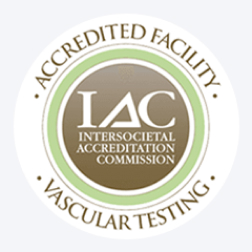Peripheral Artery Disease (PAD) and Deep Vein Thrombosis (DVT) are serious vascular conditions that can impact circulation, mobility, and overall quality of life. The good news is that small, consistent daily habits can significantly reduce your risk. By understanding these conditions and making proactive lifestyle changes, you can take essential steps to protect your vascular health and improve overall well-being.
Understanding Peripheral Artery Disease
PAD occurs when the arteries that supply blood to the legs narrow, reducing blood flow. This can lead to leg pain while walking, cramping, and, in severe cases, sores or wounds that are slow to heal. The most common cause of PAD is atherosclerosis, which is the buildup of fatty deposits in artery walls. Early detection and lifestyle modifications can prevent disease progression and serious complications.
Risk factors for PAD include age, smoking, high blood pressure, high cholesterol, and diabetes. Understanding these risk factors helps you make proactive choices to protect your vascular health.
What is Deep Vein Thrombosis?
DVT occurs when a blood clot forms in a deep vein, usually in the legs. This condition is dangerous because a clot can travel to the lungs and cause a pulmonary embolism, which can be life-threatening. Symptoms may include swelling, pain, redness, and warmth in the affected leg.
Certain factors increase the risk of DVT, such as prolonged immobility, recent surgery, or a family history of blood clots. Awareness of risk factors and early symptoms allows for timely medical intervention.
Daily Habits That Support Vascular Health
Your lifestyle choices have a significant impact on circulation and vein health. By adopting simple habits, you can help reduce your risk of PAD and DVT and improve overall wellness.
Stay Physically Active
Regular exercise keeps your blood vessels healthy and circulation robust. Aim for at least 30 minutes of moderate activity most days. Walking, cycling, swimming, and other aerobic exercises improve cardiovascular fitness, while strength training builds muscle and supports metabolic health. Exercise also boosts mood, making it an all-around benefit for physical and mental well-being.
Maintain a Healthy Weight
Excess weight puts additional pressure on your veins and arteries. Maintaining a healthy weight through a balanced diet helps reduce strain on the circulatory system.
Focus on:
- Fruits and vegetables
- Whole grains
- Lean proteins
- Healthy fats
Limit processed foods, sugar, and saturated fats to support weight management and vascular health.
Quit Smoking
Smoking damages blood vessels and increases clotting risk. Quitting smoking provides immediate and long-term benefits for circulation. Support through cessation programs, counseling, or support groups increases your chance of success.
Stay Hydrated
Proper hydration helps maintain blood consistency and reduces clotting risk. Aim for at least eight glasses of water daily, adjusting for activity level and climate. Herbal teas or fruit-infused water can make hydration enjoyable.
Managing Health Conditions to Reduce Risk
Certain health conditions can increase your risk for PAD and DVT. Effectively managing these conditions is a key part of prevention.
High blood pressure and high cholesterol can damage arteries, while uncontrolled diabetes can harm blood vessels and increase clot risk. Routine check-ups and monitoring with your healthcare provider help keep these conditions under control. Following medical advice regarding medications, diet, and lifestyle is critical to reducing complications.
Family history also plays a role in your risk for vascular conditions. If a parent or sibling has experienced PAD or DVT, taking preventive measures becomes even more important.
Recognizing Symptoms Early
Early recognition of symptoms is essential for preventing serious complications.
PAD warning signs may include:
- Leg pain or cramping during activity
- Weak or absent pulse in legs or feet
- Coldness in lower legs or feet
- Sores or wounds that do not heal
DVT warning signs may include:
- Swelling in one leg
- Pain or tenderness, often in the calf
- Red or discolored skin
- Warmth in the affected area
Prompt evaluation by a healthcare professional ensures timely treatment and better outcomes.
Treatment Options for PAD and DVT
Treatment often involves a combination of lifestyle adjustments, medications, and, in some cases, procedures.
For PAD, medications may be prescribed to improve blood flow, manage cholesterol, and control blood pressure. In more advanced cases, procedures such as angioplasty or bypass surgery may restore circulation. For DVT, anticoagulant medications prevent clots from growing and reduce the risk of new clots. In certain cases, filters may be placed in large veins to prevent clots from reaching the lungs.
Even with treatment, maintaining healthy habits—like staying active, controlling weight, and quitting smoking—remains critical for long-term vascular health.
The Benefits of Expert Care
Specialized vascular centers, such as United Vein & Vascular Centers, offer comprehensive care that combines advanced diagnostics, minimally invasive procedures, and personalized treatment plans. Access to state-of-the-art technology ensures precise diagnosis and effective treatment.
This approach ensures patients receive coordinated care that addresses immediate needs and supports long-term vascular health.
Making Small Daily Habits Count
Consistency is key when it comes to protecting your veins. Incorporating these habits into daily life can significantly reduce the risk of PAD and DVT:
- Stay active with regular movement and exercise
- Maintain a balanced diet and healthy weight
- Avoid smoking and stay hydrated
- Monitor and manage existing health conditions
- Take breaks to stretch or elevate your legs during prolonged sitting or standing

Over time, these small adjustments can make a big impact on your circulation and overall wellness.
Take Action for Your Vascular Health
Preventing PAD and DVT begins with awareness, education, and daily action. Partnering with vascular specialists at UVVC ensures access to expert care, advanced treatments, and guidance tailored to your needs.
Schedule a consultation today to learn how small daily habits combined with expert care can protect your circulation, improve quality of life, and support your long-term vascular health.
Frequently Asked Questions
Early PAD signs include leg pain or cramping during activity, coldness in the legs, and wounds that do not heal. DVT may cause swelling, redness, tenderness, or warmth in one leg. Early recognition is key for timely treatment.
Regular exercise, maintaining a healthy weight, staying hydrated, quitting smoking, and managing conditions like diabetes, high blood pressure, and high cholesterol can all help reduce risk and support long-term vascular health.
If you notice symptoms such as leg pain, swelling, discoloration, or non-healing wounds, or if you have a family history of vascular conditions, consult a vascular specialist promptly for evaluation and personalized care.


